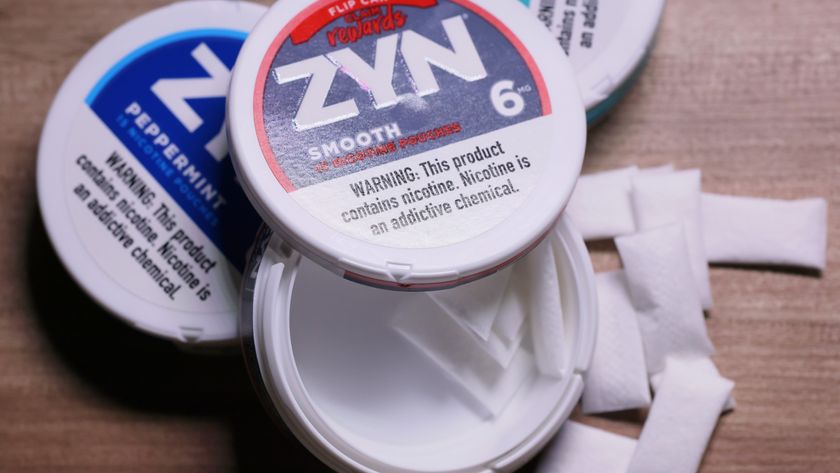Smoking Is a Drag at the Box Office

It could almost be enough to make Cruella de Vil consider a nicotine patch: a new analysis has found that films with scenes that show smoking reliably make less money at the box office than their cigarette-free counterparts. The finding, says Stanton Glantz, director of the Center for Tobacco Control Research and Education at the University of California, San Francisco, adds to the case for giving any movie that depicts smoking to an automatic 'R' rating.
Together with Jonathan Polansky, who helped craft anti-smoking messaging in the past and now heads the California-based media campaign company Onbeyond, Glantz reviewed information on 1,232 movies released in the U.S. that were among the top 10 grossing films for at least one week between 2002 and 2010.
Movies with bigger budgets tended to earn more at the box-office, as they were more likely to feature big stars and massive promotional marketing. Moreover, PG-13 films had a better chance of making more money than R-rated films—in part because the former are accessible to a wider age-range of moviegoers. But even after controlling for factors such as total budget and film rating, the researchers found that smoking was associated with 13 percent less money made in ticket sales.
Thirteen percent might not sound like a big difference, but it can translate into many millions of dollars given the huge profits of blockbusters. Last year, for example, Inception and Iron Man 2 each made around $300 million in U.S. theaters alone.
"Putting smoking in the film isn't leading to more popular films that make more money," Glantz says. It's leading to less popular films that make less money." As to why films with smoking make fewer dollars, Glantz says he is uncertain, but he adds it might be part of a collection of edgy behaviors in a film that don’t appeal to audiences as much as movie studios expect.
The research, which was funded by the Legacy Foundation, a Washington, DC-based tobacco prevention nonprofit, was published online September 26in Tobacco Control.
Smoke screen
Sign up for the Live Science daily newsletter now
Get the world’s most fascinating discoveries delivered straight to your inbox.
The controversy over cigarettes in films has raged for decades. It was not so long ago that tobacco companies paid directors to include scenes with smoking. For example, the company American Tobacco, which is now part of British American Tobacco, maker of brands such as Lucky Strike, gave a product placement firm at least $675,000 between 1984 and 1994 to get its products featured in films.
Perhaps best known for documenting that big tobacco knew for decades that nicotine was addictive and that smoking caused cancer, Glantz leads the Smoke Free Movies project, which aims advocates for the automatic 'R' rating for any film that shows characters puffing away on screen, to prevent ''anyone under the age of 17 from seeing the film in the theater without the accompaniment of a parent or adult guardian.
In September, the World Health Organization echoed the call for worldwide adult ratings for films depicting tobacco use. And other researchers have called for similar age restrictions, including Andrea Waylen of the University of Bristol in the UK. A study published by Waylen and her colleagues in the journal Thorax, released last month, crunched survey data from more than 5,000 adolescents and found that those 15-year-olds who had watched the most films featuring smoking were 73 percent more likely to have tried a drag than their counterparts who had seen the fewest such films. "The results of our study indicate that it's very important that children are protected from smoking in films," she says. Waylen adds that the findings from Glantz's study strengthen the case for adult ratings: "If there is no associated increase in [movie] income what possible excuse is there for smoking to be included?"
The rating of a film, which is ultimately set in the U.S. by the Motion Picture Association of America, is usually in mind before the first frame is shot, and written by studios into the contract of many movie directors, according to Glantz. So he hopes the new findings will convince studios to keep cigarettes out of the frame: "Hollywood is all about money. They talk about art, but it's all about money."
But not everyone is convinced that automatic 'R' ratings for smoking provide the answer. Simon Chapman of the University of Sydney, who describes himself as "'enemy number one' of the tobacco industry here in Australia", says that using this type of adult classification is an inefficient way of keeping youngsters from trying cigarettes. "I think that it's a very minor thing," he says of movie ratings. He adds that making more films R-rated would unfairly put the onus on parents to sort through which films show violence and sex, and which ones show smoking.
Chapman also points out that the new report from Glantz and Polansky does not take sales of DVDs and downloads into account—and many teens are able to view R-rated films this way. He adds, "the fact is that kids are already seeing R-rated films with great ease. Even the ones whose parents don't allow them to do that find a way."
The Motion Picture Association of America says it takes a highly contextual approach to determining film ratings, rather than an 'automatic' approach based on a checklist. "We believe that we should treat smoking as we treat all other rating elements," says Howard Gantman, a spokesperson for the association.
However the campaign for automatic R-ratings for smoking turns out for future films, smoky classics such as Disney's 1961 cartoon 101 Dalmatians—featuring Cruella De Vil puffing away at her cigarette holder—will likely remain a popular children's movie for years to come. "In fact," Glantz notes, "101 Dalmatians was one of the smokiest films made."
This article was first published on Scientific American. © 2011 ScientificAmerican.com. All rights reserved. Follow Scientific American on Twitter @SciAm and @SciamBlogs. Visit ScientificAmerican.com for the latest in science, health and technology news.













